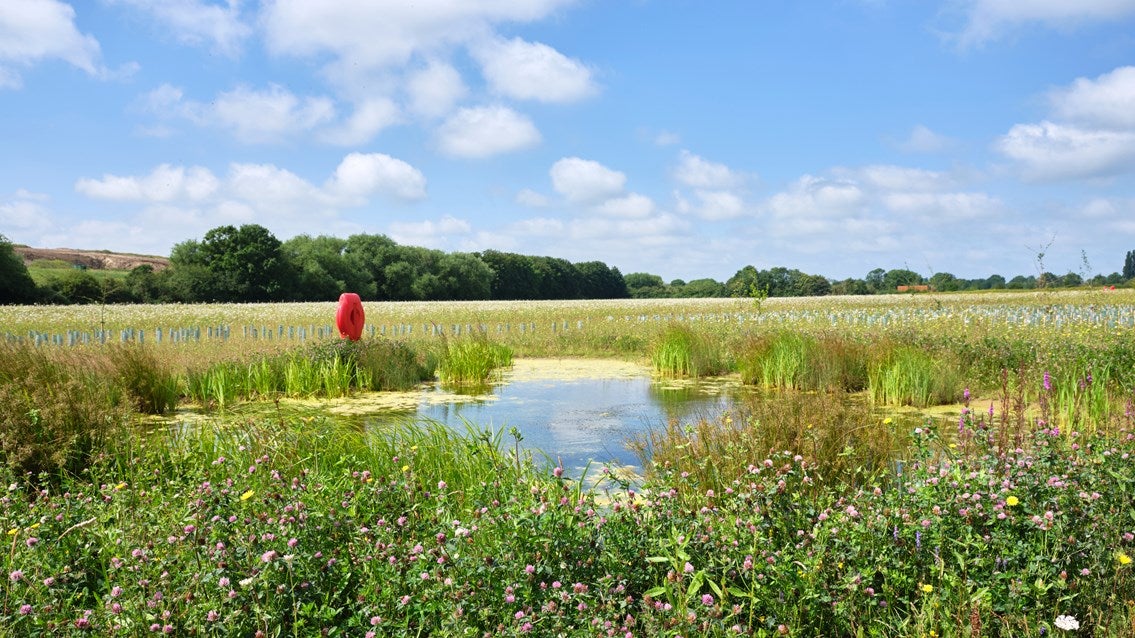
The East West Railway Company (EWR Co) has set a target of a 10% biodiversity net gain across the whole project.
The East West Rail project is a new rail link being built in the UK connecting East Anglia with Central, Southern, and Western England. In particular, the project will build a line linking Oxford and Cambridge via Bicester, Milton Keynes, and Bedford.
According to the East West Railway Alliance (EWRA), 20 Ecological Compensation Sites (ECSs) along the length of the route from Bicester to Bletchley have been created to protect and reduce the impact of the project on important and protected species and habitats.
Many of the ECSs created by EWRA have been transformed from low diversity, arable land into purpose-built wildlife havens, designed to benefit invertebrates, butterflies, birds, bats, reptiles and amphibians, otters, and badgers.
EWR Co, which is responsible for planning the rest of the project between Bletchley and Cambridge, now wishes to continue the environmental work carried out by EWRA.
The company committed to the 10% target in its latest proposals published in May.
“Reducing the project’s environmental impact has been a crucial factor in designing and building the East West Rail, which is why we have been working closely with ecologists, engineering designers, and construction teams to preserve or improve habitats at every opportunity,” said EWRA Director Mark Cuzner.
“We are delighted that our ECSs are proving to be a huge success and there are management plans in place for all of them to ensure they continue to flourish for many years to come.”
Following completion of the project, the ECSs will be returned to their third-party landowners or to Network Rail, who will ultimately become the maintainers of these sites for years to come.
Positive impact of sites already showing
The ECSs – which incorporate 45 ponds, badger setts, a bat house, more than 70 bat boxes and the planting of more than 150,000 plants and trees – benefit some especially important species and habitats associated with the East West Rail project.
These include black poplar trees – the most endangered native timber tree in Britain – the rare black hairstreak butterfly, and barbastelle bats – one of the rarest species of mammals in the UK, listed as Near Threatened on the global IUCN Red List of Threatened Species.
The ECSs and new habitats are now established, and according to EWRA, surveys are already showing positive results.
Two species of bat are now roosting in a specially-constructed bat house, built to replace the Swanbourne Station building. Three further species have been recorded visiting the structure: Brown-long eared, Natterer, and Daubenton. Bat numbers across the project have remained stable since the first surveys in 2021, suggesting bats have coped well with the construction phase of the Project.
All of the new ponds created have confirmed great crested newt populations, according to EWRA, and 10 out of the 11 barn owl boxes built have shown evidence of breeding during surveys.
27 artificial badger setts built have all been occupied by badgers, with a fifth of them used for breeding, and an artificial otter holt is being used regularly by otters.
“The UK has suffered a significant loss of flora and fauna over recent decades, so it is fundamental that we not only preserve and conserve these along the rail route but do our bit to increase the chances for nature and wildlife,” said Vanessa Hilton, EWR Co’s head of environment.
“It’s great to know that these ECSs are doing well, along with our wider landscape replanting work and that is why we have committed to a 10% biodiversity net gain across the length of the whole Project. Learning from the work that has already been done and we’re confident we can repeat this success story for the wildlife between Bletchley and Cambridge.”
Offsetting the environmental impact of rail projects is a high priority for project managers, but there are those who have come under fire.
In February, environmental groups accused the HS2 project of hugely undervaluing natural habitats and the wildlife that is being destroyed by the construction of the new high-speed line. In a joint report, the groups said that the tool HS2 Ltd used for assessing impacts on nature is “untested, out of date and fundamentally flawed”.



